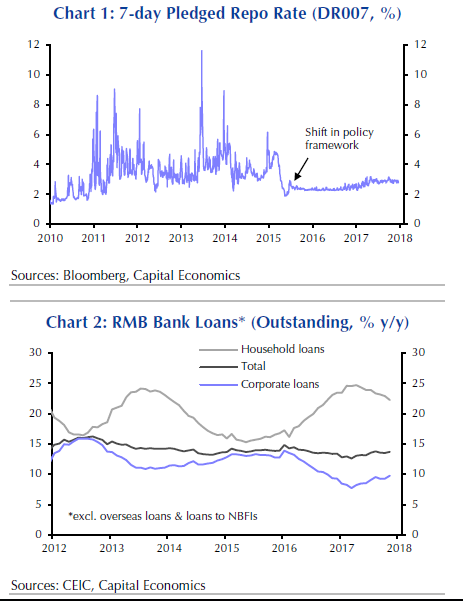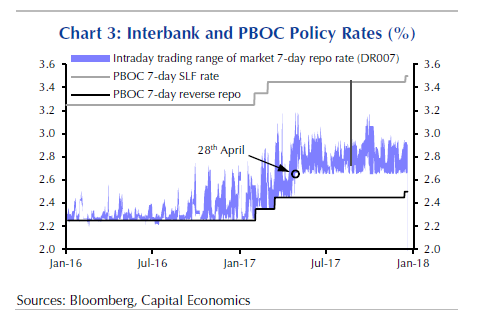The Chinese often operate in nuanced ways. Their central bank policies for influencing interest rates, for example, often use methods to influence interest rates that are not as clear as those used in the developed world. Last week’s People’s Bank of China (PBOC) rate hike, which has not resulted in tighter monetary conditions, is but one example. “Investors should be cautious about interpreting interest rate changes in China using the same framework they apply to central bank actions elsewhere,” Capital Economics noted in a December 21 report.

PBOC doesn't use REPO rate as quantitative measures target goals
The PBOC has not made a full transition towards targeting intrabank rates as is commonly done among major economy central banks. Instead of taking these actions with the goal to influence borrowing, they publish benchmark rates and use an explicit quantitative tool to influence how much interest is charged to borrowers or paid on bank deposits.
The PBOC set a target for monetary growth, making use of reserve requirements and quotas for bank lending, including broad measures of monetary growth.
“Because the quantity of money, rather than its price, was the focus, interbank rates were left to fluctuate wildly in response to swings in liquidity demand,” Julian Evans-Pritchard, Capital Economics senior China economist, and Mark Williams, the chief Asia economist, noted in a December 21 “Refresher on China’s monetary policy framework.”
With Chinese banks becoming a lessoned factor in issuing new credit, the broader quantitative controls were the move to better influence interest rates as opposed to interbank tightening measures.
PBOC leaves market participants guessing, but watch actions not words
In 2015, while experimenting with the 7-day repo rate, a “peculiarity of the Chinese system” began to show.
In most regions, the interest rate charged by central bank to the market sets a ceiling for market rates. Because the PBOC doesn’t provide funds through its reverse repo operations on demand, most transactions take place above the reverse repo rate. This is coupled with communication that often leaves market participants guessing:
To make matters even more complicated, the PBOC appears to have conducted a “shadow hike” to this floor earlier this year. In late April, the floor for the market repo rate jumped from 2.45% to 2.65% without an equivalent increase the PBOC’s reverse repo rate. No announcement was made and the exact mechanics of this shadow hike are unclear. But the new floor is so stable that it is clearly maintained by official intervention of some kind. Our best guess is that the PBOC wanted to narrow the trading range of the interbank rate and, possibly, push it higher (though note that this came around the end of the recent tightening cycle) but didn’t like the optics associated with a formal change to its OMO rates.
In other words, one might be best suited to watch not what the PBOC does on interbank lending rates as much as watch the market repro rates.
The problem in focusing on market rates is that they can be “quite volatile,” with added noise making efforts to determine Chinese central bank intentions difficult from this avenue as well.
Capital Economics prefers the 30-day average of the daily volume-weighted average price of the market repo rates. Using this as a gauge, they deduce that the PBOC has tightened monetary policy more than repo rates would suggest.
Examining the economic tea leaves, a weaker job market and slowing economic growth may lead the PBOC to loosen, not tighten, monetary policy in the near future, a move that could happen through increased liquidity.
“Even if our expectations for monetary easing turn out to be misplaced, the broader takeaway is that Chinese monetary policy is still a halfway house been a price-based framework and quantity-based framework,” the report noted, encouraging China watchers to focus on what is done not said. “We encourage investors to look through the official policy rhetoric and much of the associated press coverage, and focus instead on market interbank rates for signs as to how the policy stance is actually shifting in practice.”


